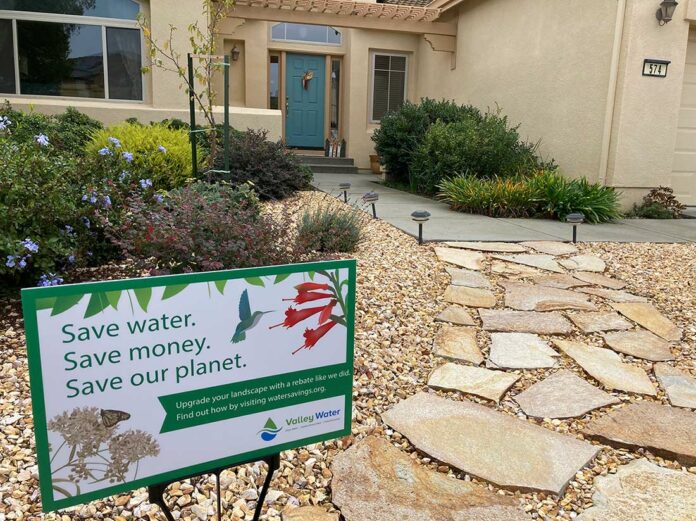
Homeowners and commercial property owners who want to cut down on their outdoor water use and landscape maintenance should consider starting now or in the spring if they want to install drought-tolerant lawns, according to conservation experts.
Regardless of what time of year one is able to complete such a project, interested property owners can gain rebates from Valley Water—up to $3,000 for residential and $50,000 for commercial properties—to offset the cost of their new landscaping installation.
Rebates for drought-tolerant lawns and water-saving appliances are among numerous incentive programs offered by Valley Water to encourage residents and business owners to limit their water use. Not only is the fall one of the best seasons to undertake a new landscape installation—the county is in the midst of a major statewide drought that has reduced water supplies and could continue well into next year, or longer.
“These programs are very attractive to homeowners as well as commercial” property owners, Valley Water Director John Varela said. “Over 50% of your daily water use, as a homeowner, is in irrigation. That’s a huge amount of water, so the board of directors has created the rebate program, which is extremely popular.”
Valley Water Conservation Specialist Ashley Shannon said in July, the district increased drought-tolerant lawn rebates from $1 to $2 per square foot, up to $3,000 per home.
Participation in the program has grown exponentially, and the water savings can be immense. Shannon said it is estimated that by converting from a grass lawn to drought-tolerant, property owners can save about 35 gallons of water per square foot per year.
Since July, Valley Water has seen about a 250% increase in the number of property owners seeking drought-tolerant lawn rebates.
Shannon explained that property owners should consult with district staff and submit their plans before converting lawns to ensure they meet Valley Water’s criteria for a rebate. The district’s website for the programs includes a list of drought-tolerant plants that owners can install to qualify for a rebate.
She added that permeable ground coverings like gravel or wood chip mulch are preferred, as these allow irrigation and storm water to percolate back into the groundwater. Low-flow irrigation systems are among the criteria for a rebate.
Valley Water has a list of qualified landscape contractors, but homeowners can do the work themselves or hire any contractor they want as long as their plans meet the installation requirements, Shannon said.
Shannon listed further advantages of converting to a drought-tolerant lawn: “You can cut down on weekly maintenance—it’s more seasonal (instead of year-round) with yards like this. It reduces weeds, chemicals you have to use and gas-powered mowers.”
The water district also offers rebates and incentives for other water-saving features, including graywater reuse, rainwater capture and irrigation equipment upgrades. For more information, visit valleywater.org/watersavingsorg.
While Valley Water officials are encouraged by the growing popularity of the district’s rebate programs, Varela said he would like to see more participation from the valley’s biggest water guzzlers.
“My message to businesses and managers of the community is, we need to talk more about conservation. And you need to play your part as well as the homeowners are, and qualify for the rebate,” Varela said.









